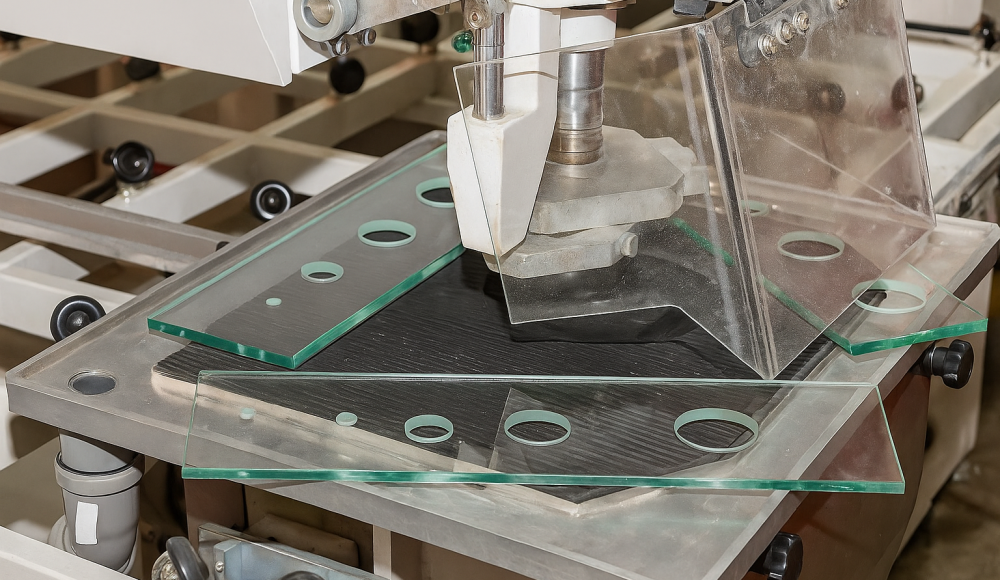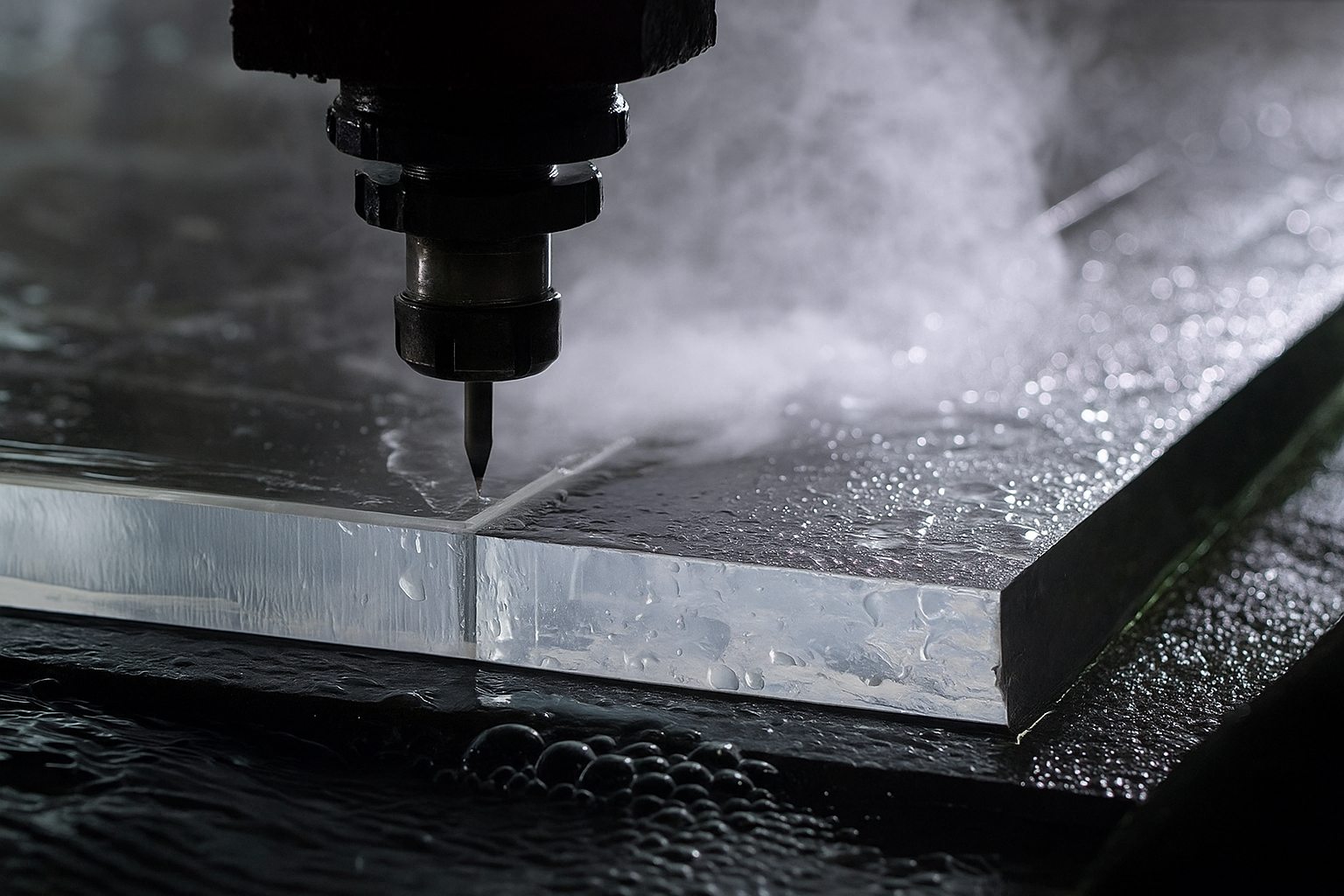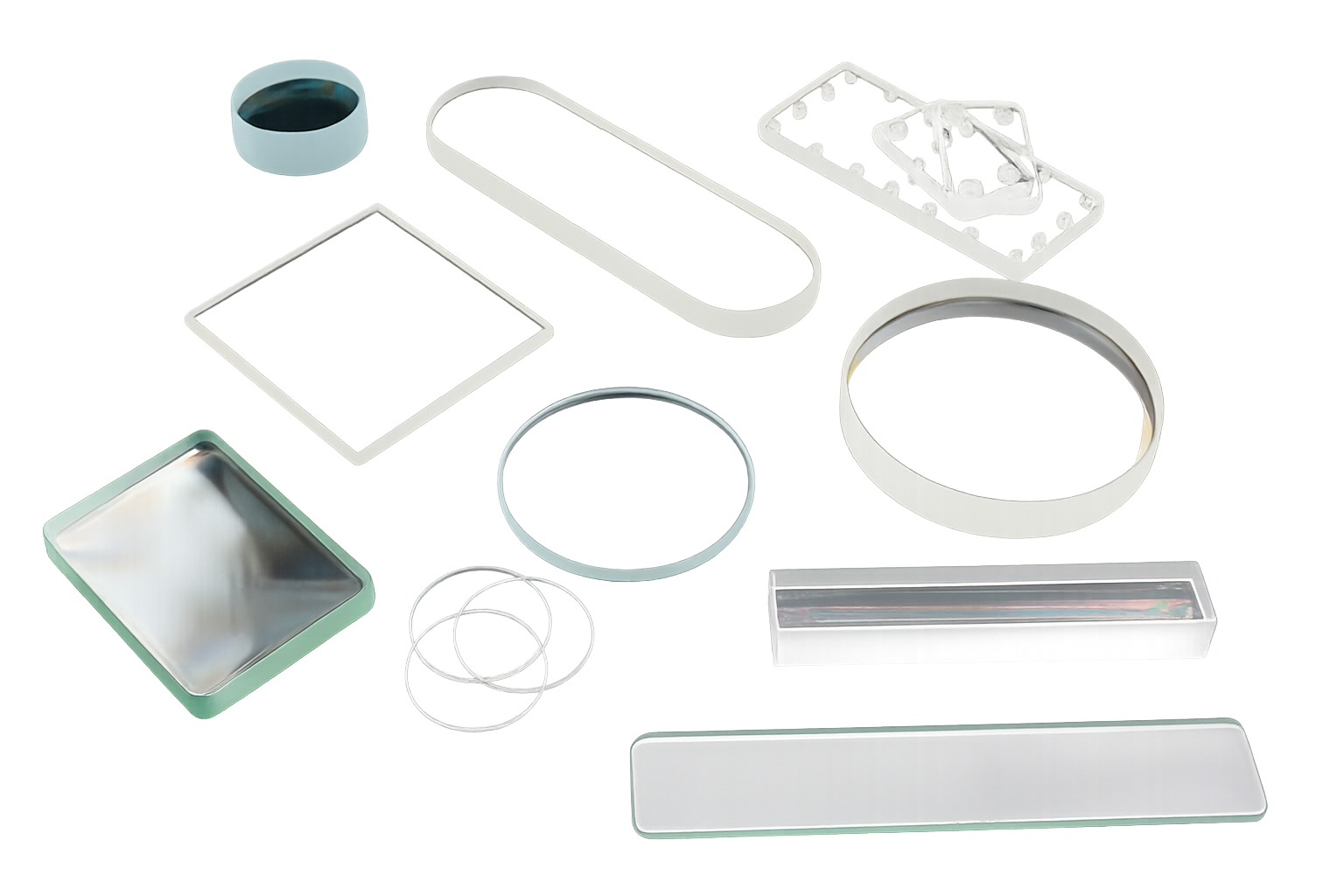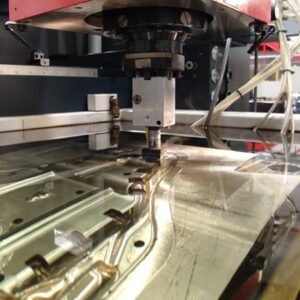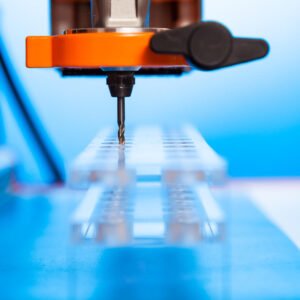ガラスCNCの機械加工は、精密成分の製造方法に革命をもたらしました, デザイナーとエンジニアが以前は非現実的または不可能だった複雑な幾何学と厳しい許容範囲を実現できるようにする. マイクロ流体デバイスから大きな建築パネルまで, CNCマシンガラスは、例外的な精度を提供します, 再現性, そして表面仕上げ. このガイドは、方法を深く掘り下げています, 材料, 利点, ガラスCNC加工の考慮事項, 次のプロジェクトのために情報に基づいた決定を下すことができます.
ガラスをCNC機械加工できます?
はい - 工作機械の剛性のアドバンス, スピンドルデザイン, ツーリング, プロセス制御により、CNCマシンガラスが確実に実行可能になりました. しかし, ガラスの固有の脆性と硬度は、チッピングを最小限に抑えるために特別なテクニックとツールが必要です, ひび割れ, そして工具の磨耗. 適切な固定具を備えています, クーラントの配達, およびパラメーター最適化, CNC加工は、複雑なカットを生成する可能性があります, 穴, ガラスパネルとコンポーネントの表面テクスチャ.
CNCガラスの加工はどのように機能しますか?
ガラスCNC加工は標準のCAD→CAM→CNCワークフローに従います, しかし、物質的な行動に対する重要な適応があります.
CADからCAMワークフロー
デザイン & 許容範囲
CADで3Dモデルを作成します, 幾何学的寸法と公差の指定 (GD&T).
重要な表面を特定します (例えば, 光学面) サブミクロンの平坦性または粗さが必要です.
ツールパス生成
CAMソフトウェア, 適切なツールパスを選択します (輪郭を描く, ポケット, 掘削).
ステップオーバーを定義します, 降圧, 送り速度, ガラス除去のために最適化されたスピンドル速度.
マシンのセットアップ
フィクスチング
真空チャックを使用します, 接着パッド, または、ストレスを誘発することなくガラスをサポートする柔らかい顎.
振動と割れを防ぐために、均一なサポートを確保してください.
ツーリング & スピンドル
ダイヤモンドコーティングエンドミルを使用します, ドリル, および粉砕/burrツール.
高速スピンドル (≥ 30,000 回転数) 切断力を減らし、表面仕上げを改善します.
クーラント & ダストコントロール
洪水クーラントまたはマイクロ潤滑は、熱の蓄積を最小限に抑え、破片を洗い流します.
統合された抽出システムは、表面のスクラッチを防ぐためにガラスダストをキャプチャします.
機械加工操作
粗いパス
保守的な深さのカットから始めます (例えば, 0.1–0.2 mm) 中程度の飼料速度で、バルク材料を穏やかに除去します.
仕上げパス
細かいステップダウンに切り替えます (≤ 0.05 んん) ターゲットの表面粗さを実現するためのフィードを削減しました (< ラ 0.2 μm).
インプロセスモニタリング
振動センサーと音響フィードバックを使用して、ツールの摩耗を検出したり、リアルタイムで割ったりする.
マシニング後のステップ
研磨
細かいダイヤモンドパッドまたはスラリーを使用した二次研磨により、光学的透明度がさらに向上する可能性があります.
焼き戻し/強化
熱または化学の強化により、靭性が向上します, 負荷をかけるまたは安全コンポーネントにとって重要です.
最終検査
座標測定機 (CMMS), 干渉計, 表面プロファイロメーターは、幾何学的および表面仕様を検証します.
ガラスCNC加工で使用される技術
Glassのユニークなプロパティには、機械加工技術の多様なツールキットが必要です:
フライス加工 & 輪郭
材料を削除してエッジを形成します, くぼみ, ダイヤモンドエンドミルを使用した3Dシェイプ.
掘削 & つまらない
サブから正確な穴を作成します-0.5 ダイヤモンドコーティングドリルとリーマーを使用して、MMから数ミリメートル.
彫刻 & ポケット加工
ダイヤモンドカッターは装飾的なパターンを彫ります, シリアル番号, またはガスケット用の浅いポケット.
溝入れ加工 & スロッティング
シールまたはアセンブリ機能の狭いチャネルをフォームします; 流体処理アプリケーションで重要です.
研削 & ラッピング
平坦性と粗さを光寛容にもたらす表面洗練技術.
水ジェット切断 (ハイブリッドシステム)
CNCプラットフォーム上の研磨水ジェットヘッドは、熱応力なしで2Dプロファイルを実現します.
熱/化学的強化
マシン後のトリートメント - イオン交換浴または強化オーブン - 表面圧縮と耐久性を増やす.
CNC加工に適したガラスタイプ
| ガラスタイプ | 主要なプロパティ | 一般的な用途 |
| ホウケイ酸塩 | 低熱膨張, 高い耐薬品性 | ラブウェア, 精密光学 |
| ソーダライム | 経済的, 機械加工可能, 適度な強さ | 建築パネル, 装飾コンポーネント |
| 融合シリカ | 超低拡張, 高い明快さ | 半導体ウェーハ, 高出力光学系 |
| アルミノケイ酸塩 | 高強度, 良好な熱安定性 | スマートフォン画面, 耐久性のあるディスプレイカバー |
| 鉛ガラス | 高い屈折率, 密集 | 精密レンズ, プリズム |
| 石英 | 例外的な純度, UV透明性, 高耐熱性 | UVランプ, 半導体プロセスウィンドウ |
ガラスCNC加工の利点
高精度 & 再現性
バッチ全体で一貫して±10 µmの許容範囲を達成します.
複雑なカスタムジオメトリ
アンダーカットを生産します, マイクロチャネル, 単一のセットアップのフリーフォーム表面.
優れた表面仕上げ
ra downに 0.05 豊富な手動研磨なしのµm.
材料効率
最適化されたツールパスとネスティングを介してkerfの損失とスクラップを最小限に抑える.
オートメーション & 安全性
CNCコントロールにより、オペレーターの露出がガラスの破片への曝露を減らします; 自動荷重オプションはスループットを増加させます.
ガラスCNC加工の制限
脆性リスク
薄い断面 (< 2 んん) タイトなコーナーはストレスの下で割れます.
装置 & ツーリングコスト
高精度のスピンドルとダイヤモンドツールには、重要な資本投資が必要です.
オペレーターの専門知識
ガラス動作の特別なトレーニングが必要です, ツーリング選択, およびプロセスチューニング.
ガラスCNC加工のアプリケーション
光学 & フォトニクス
レンズ, プリズム, 導波路, およびビーム型要素.
半導体機器
ウェーハ基板, マスクアライナーウィンドウ, および保護カバー.
医学 & バイオテクノロジー
マイクロ流体チップ, カテーテルルーメン, 診断スライドチャンバー.
航空宇宙 & 防衛
圧力窓, センサーハウジング, および高温のビューポート.
家電
タッチスクリーンカバー, カメラレンズカバー, および装飾ガラス部品.
建築 & 装飾的な
エッチングされたガラスパネル, 照明器具, 芸術的なインスタレーション.
コストに関する考慮事項
資本支出
高速スピンドルを備えたCNCマシン: $150,000 - $ 500,000+.
ダイヤモンドコーティングツール: $100 - カッターあたり500ドル.
運用コスト
熟練したオペレーターの賃金, クーラント, ツールウェア, およびメンテナンス.
ボリュームエコノミクス
より高いボリュームオフセットセットアップコスト; スモールランは、パーツあたりプレミアムを運びます.
設計の複雑さ
複雑な機能はサイクル時間を増やします; 設計の野望と予算のバランス.
他のガラス製造方法との比較
| 側面 | CNC加工 | レーザー切断 | 手動技術 |
| 精度 | ±10μm | ±50〜100 µm | ±100〜300 µm |
| 3D機能 | 完全な3D輪郭とアンダーカット | 主に2Dプロファイル | 限られた形状 |
| 熱応力 | 最小限 (クーラント付き) | 潜在的なマイクロクラック | 低いが一貫性がない |
| 設定時間 | 適度 (カムプログラミング) | 低い | とても低い |
| 表面仕上げ | RA 0.05-0.2 µm | RA 1-3 µm | ラ > 3 μm |
ガラスCNC加工プロバイダーの選択
装置 & 認証
ISOを探してください 9001:2015, 航空宇宙用AS9100, またはISO/IEC 17025 計測用.
技術的な専門知識
光学系のケーススタディを確認します, 医学, または半導体産業.
品質管理
インプロセスプロービング, CMM検査, 干渉法, および表面プロフィロメトリー.
リードタイム & 容量
緊急の実行のためのスループット機能とバックアップ計画を確認します.
後処理サービス
研磨, 焼き戻し, コーティング, およびアセンブリ統合.
ケーススタディ: 精度の高いトップガラスのCNC加工プロセス
着信検査
ガラスタイプを確認します, 厚さ, レーザー干渉法による平坦性を事前に認定します.
ツールパスの最適化
最小限のツールエンゲージメントと振動制御のために調整された社内カムテンプレートを使用する.
マルチステージ加工
ラフカット 20,000 回転数; でパスを終えます 40,000 rpmで 1 µmステップダウン.
表面強化
オプションのダイヤモンドスラリー研磨またはイオン交換強化.
最終QA & 包装
CMMおよび光学検査; 振動ダンプフォームを備えたカスタムクレート.
結論
ガラスCNCの機械加工は、デザインの野望と製造可能性の間のギャップを橋渡しします, 業界全体の革新を促進する精度と複雑さの偉業のロックを解除する. ツール選択のニュアンスを理解することにより, プロセスパラメーター, および物質的な行動, CNC加工を活用して、パフォーマンスと美学の最も厳格な基準を満たすガラスコンポーネントを生産できます. パートナーを評価するとき, 技術的な専門知識を優先します, 品質システム, そして、プロジェクトからプロダクションまでのプロジェクトの成功を確実にするために、トップスの精度で示されているように、ガラス製造の実績が実績があります。.
続きを読む:

